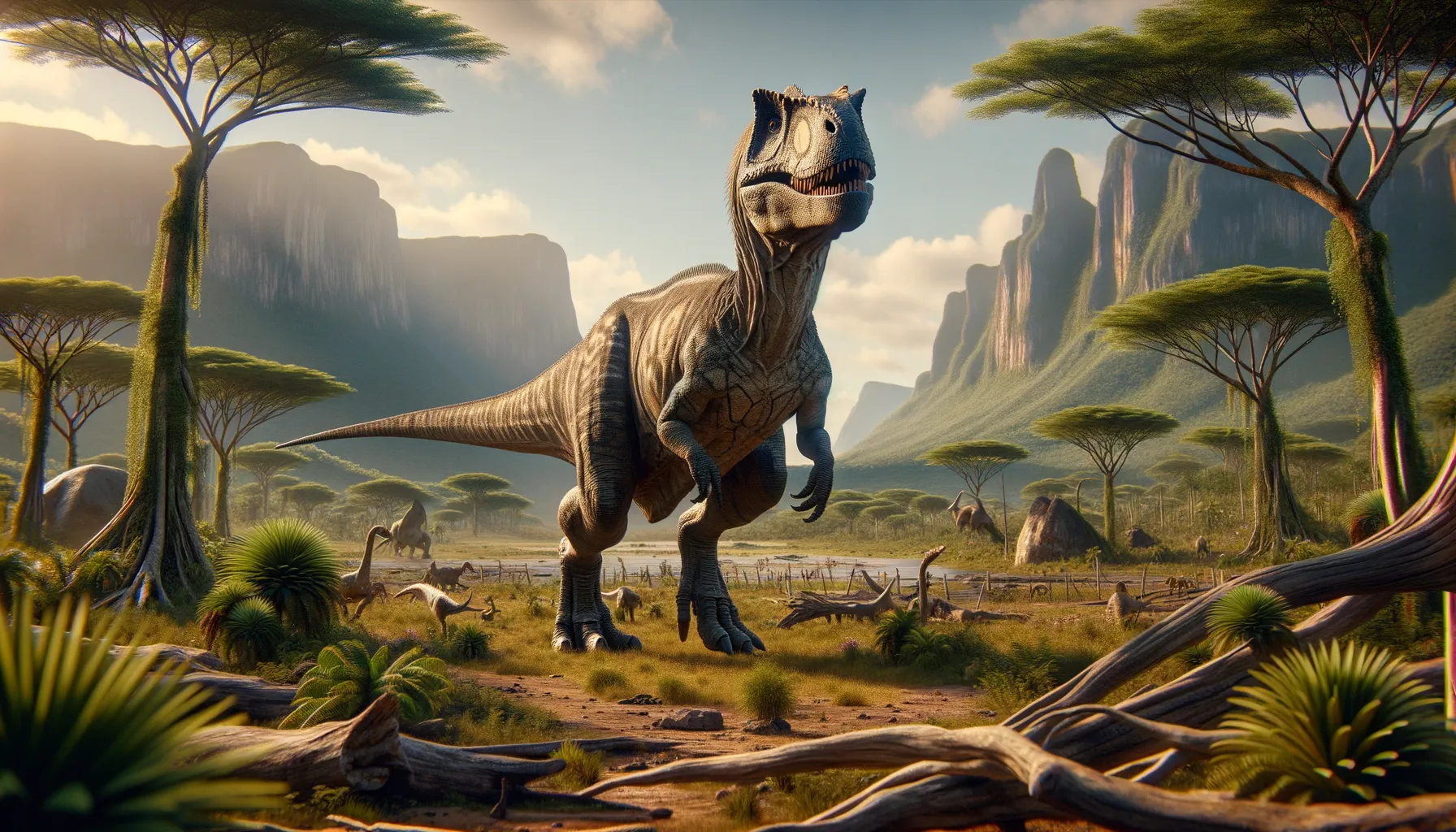
Nhandumirim
Small size, swift strides, big impact.
Period
Triassic
Length
About 1.5 meters long.
Height
Roughly 0.5 meters tall.
Weight
Approximately 10 kilograms.
Nhandumirim was a small, fast theropod dinosaur that roamed the regions we now know as Brazil during the late Triassic period. Its discovery in 2019 added valuable insights into the diversity of early dinosaurs. This dinosaur's small size and speedy nature helped it survive in a world filled with bigger predators. Nhandumirim's fossil findings provide a deeper understanding of early dinosaur evolution and the ecological dynamics of its time.
Diet
Nhandumirim was likely an omnivore, feeding on small animals and possibly some plants. Its diet would have included insects, tiny vertebrates, and available plant matter.
Hunting
As a small dinosaur, Nhandumirim probably hunted alone, using its speed and agility to catch prey. It likely relied on ambush tactics, surprising its victims with quick bursts of speed.
Environmental challenges
Nhandumirim faced environmental challenges from larger predators in the late Triassic ecosystem. The fluctuating climate of the time presented difficulties in finding consistent food sources. Competition for resources with other small and medium-sized dinosaurs was another significant challenge.
Speed
Relatively swift for its size.
Lifespan
Potentially lived up to 10 years.
First discovery
Discovered in Brazil in 2019.
Fun Facts
- Nhandumirim is a small, early dinosaur that was discovered in Brazil.
- The name 'Nhandumirim' means 'small rhea' in the Tupi-Guarani language, highlighting its size and bird-like features.
- This dinosaur lived around 233 million years ago during the Late Triassic period.
- Nhandumirim was an omnivore, meaning it likely ate both plants and small animals.
- It is one of the earliest dinosaurs, providing insights into the early evolution of these fascinating creatures.
- Nhandumirim's slim legs suggest that it was a fast runner, possibly to escape predators or catch prey.
- The discovery of Nhandumirim helps scientists understand the diversity of early dinosaurs in the prehistoric world.
Growth and Development
Growth patterns suggest that Nhandumirim reached adulthood relatively quickly due to the pressures of predation. Its small size meant it had a rapid growth rate compared to larger dinosaurs. The fossil evidence indicates it had growth spurts during favorable conditions.
Habitat
Nhandumirim inhabited the forests and floodplains of prehistoric Brazil. These areas provided abundant plant life and small animals for food. Its habitat included diverse environments, ranging from dense forests to open areas alongside rivers.
Interaction with other species
As a smaller dinosaur, Nhandumirim likely avoided direct competition with larger carnivores. It might have coexisted with herbivorous species by sharing the same general environment. Interactions with other species were more about competition for food than cooperative behaviors.
Natural lifespan
Nhandumirim had a natural lifespan of around 10 years.
Reproduction
Nhandumirim likely laid eggs, following the reproductive patterns of early theropods. Nesting sites were probably in safe, secluded areas to protect the offspring from predators. Parental care after hatching might have been minimal, with young being independent quickly.
Social behaviour
Nhandumirim might not have been very social, primarily leading solitary lives. However, some interactions with others of its species could have occurred during mating seasons. Limited social structures likely existed due to its small size and the need for stealth.
Fossil locations
Nhandumirim fossils have been found in Brazil, specifically in the Paraná Basin. These fossils include well-preserved bones that have offered critical insights into its anatomy and lifestyle. The discovery site is one of the key fossil locations for late Triassic dinosaurs in South America.
